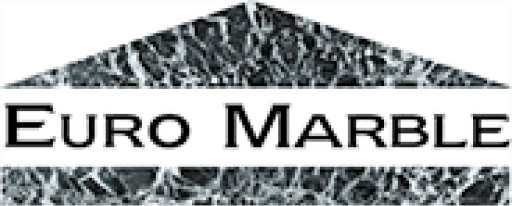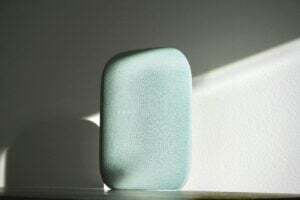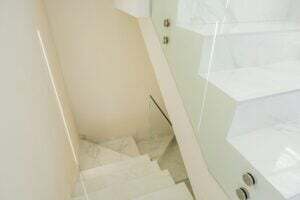Are you considering using backlighting and stone in your home or commercial property?
It’s a fantastic idea! Backlit stone looks amazing and can work wonders in all sorts of spaces. But this unique stylistic choice does need correspondingly unique considerations to ensure it looks and functions as well as it ought to.
Here is our guide to how to go about using natural stone for your backlighting feature.
What is Backlighting?
Backlighting is a stylistic design technique that involves the placing of a light source behind a material that is either semi- or fully translucent. The effect is one of illumination as the light passes through the material without the harshness of direct brightness.
There are many ways to create stunning visual effects using backlighting. With backlit stone, for example, you can bring out the inherent beauty of the stone itself and highlight particular aspects of its composition.
Backlighting is a popular feature of interior design nowadays as it can be a simple and yet refined way of adding a bit of flair and opulence to an otherwise bland lighting arrangement.
What are the Best Options for Backlit Stone?
Natural stone is a fantastic option for both internal and external design, but not all stones are great for backlighting. Translucency is the key here. Without an element of translucency, the light source will not shine through and the entire effect of backlighting will be lost. So what are the best options of stone for backlighting?
Onyx Stone
Backlit onyx looks spectacular! Onyx stone is known and beloved for its translucent properties. This is why it is in fact the most popular stone for use in backlighting.
Its ability to diffuse light creates a bold and dramatic effect, softening the light itself, whilst bringing to life the stunning patterns of the stone.
You can use onyx throughout the house: It’s beautiful as is for incorporation on a feature wall or it can blend seamlessly into your home as a kitchen countertop.
Quartzite Stone
Quartzite is a popular stone for many reasons. Its high level of durability and hardiness makes it a functional and practical option for use in construction and design. Yet it’s not just about the brawn – quartzite is beautiful as well.
Different types of quartzite offer varying degrees of translucency so you will need to consider the specific type and slab when choosing this wonderful stone. Nevertheless, translucent varieties of quartzite can absolutely work visual wonders with backlighting behind it.
Marble Stone
We couldn’t possibly leave marble off the list here, could we? Like quartzite, this iconic natural stone comes in a wide variety of types. Make sure you consider the variety in front of you to ensure you achieve the optimal effect with your backlit marble.
However, with the right translucency, few things measure up to the aesthetic appeal of lit marble stone. The translucent crystal patterns and subtle shading that is so beloved of marble only becomes more stunning when set in front of the backdrop of carefully designed lighting.
Granite Stone
Granite is not as commonly used as a backlit stone as the options above. Yet, with the right type, it can really serve a powerful visual statement.
Granite is known for its granular make-up and unique aesthetic, so with the right degree of translucency, this intricate material can become absolutely glorious when enhanced with backlighting.
How to Choose the Right Stone for Backlighting
When choosing a stone for backlighting, there are several key factors to consider.
1. Translucency
It is likely obvious by this point, but worth including here for comprehensiveness’ sake. Translucency is the most important factor when considering backlit stone. Only translucent stone tiles will allow the light to pass through to create the desired effect to begin with.
To this end, while onyx is considered the most translucent stone, you can make sure that any variety of stone slab under consideration has the right level of translucency to achieve the look you are after.
2. Veining and Patterns
This one is all about personal preference. Natural stone comes in all shades, with a wide range of patterns and numerous different veining aesthetics. The play of backlighting and the effect of the subsequent shadows is part of what makes this design choice so alluring.
So consider what sort of pattern you want to create? What sort of mood are you trying to achieve? What sort of colours will make your room sing? Once you know what you’re after, you can begin finding the right beautiful stone to enhance with perfectly arranged backlighting.
3. Thickness
Like translucency, the thickness of a stone slab or tile can affect the ability of light to pass through. Thinner stone panels allow for better diffusion of light.
There are some modern design techniques that use super thin stone panels, reinforced with other materials, to enhance translucency even more. But this comes down to personal preference and the aesthetic you’re trying to achieve.
Best Locations for Backlit Stone
Backlit stone can be used throughout the home to create ambiance, infuse style and make a strong aesthetic statement.
In the Kitchen
Backlit countertops or backsplashes are becoming more and more popular as they can serve as eye-catching features while also providing functional lighting.
In the Bathroom
Brightly lit up stone can enhance the aesthetic of bathroom vanities or shower walls, helping to create a spa-like atmosphere.
In the Living Room
Backlit stone makes for a create and simplistic feature wall to either work as a focal visual point in the room, add some needed depth or simply bring in some colour.
In the Hallway
Backlit stone panels can create both a welcoming ambiance and functional path guide to turn your hallway into an inviting, warm space.
Euro Marble - premier supplier of natural stone
Whether you’re considering a backlit marble feature wall or onyx countertop, Euro Marble is the premier supplier of natural stone throughout Sydney.





